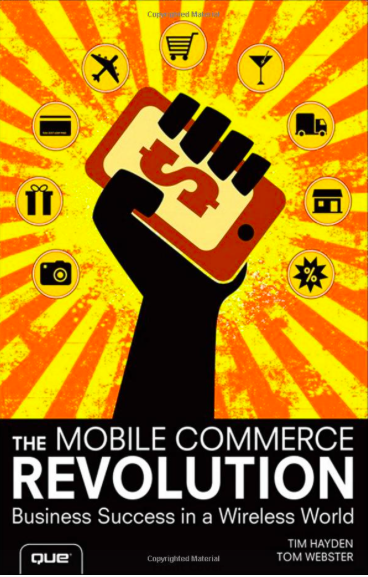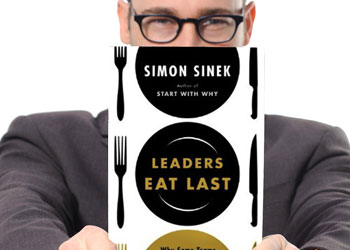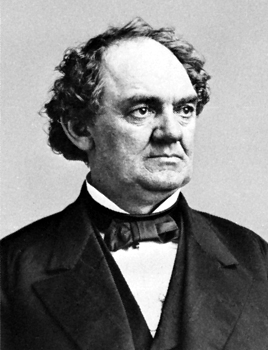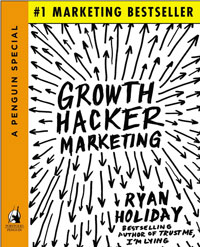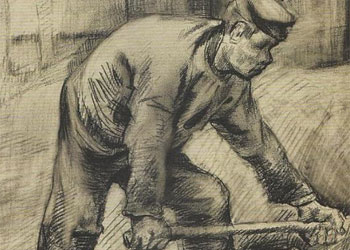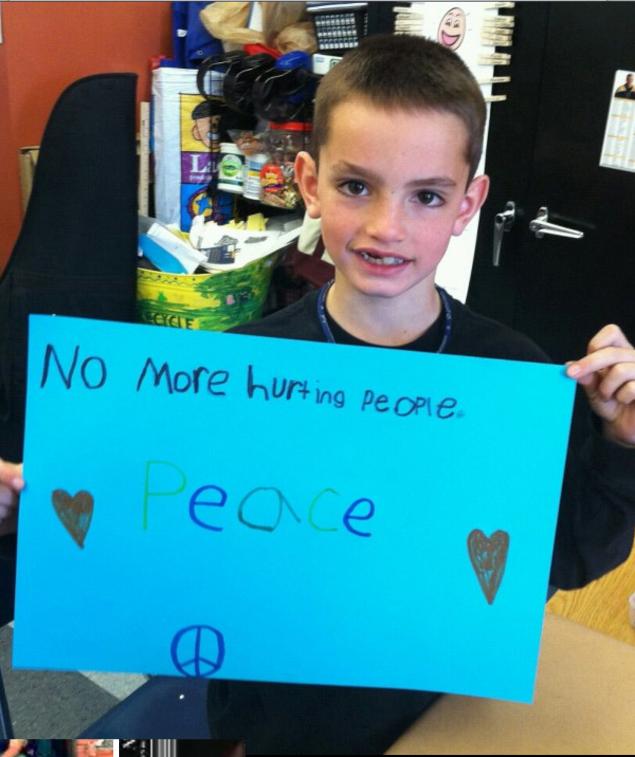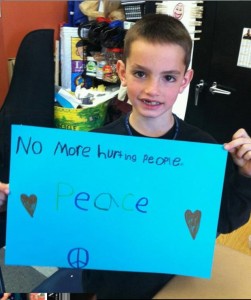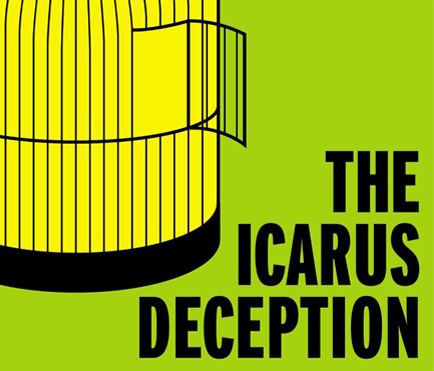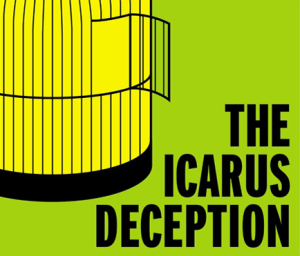I first interviewed Simon Sinek for Marketing Over Coffee back in 2010 (transcript here). His sophomore effort was published at the end of last year and is another exceptional book. You can listen to the original audio here, or read this transcript. Transcription service by rev.com.
John:We can wind back to 2010. I got “Start With Why” sent to me from a PR person behind the book. I clearly remember the pitch said, “Look, check out this TEDx video that talks about it.” I looked, and thought, “Wow, a TEDx video that has over 1,000 views. There’s got to be some meat here. This is a big deal.” Here we are, four years later, 16 million views on that TEDx video.
We’re going to talk about your latest book here, “Leaders Eat Last.” You’re just coming off of the big TED, if you will. I’m very pleased to welcome back Simon Sinek. Simon, thanks for joining us.
Simon: Thanks for having me. It’s good to see you again.
John: Pretty much our audience are all huge TED fans. Tell us about that. How was TED? How did that all go?
Simon: It was my first time at the big event, speaking and attending. It was overwhelming in every proportion. It is exactly what you would expect it to be: surreal, brilliantly choreographed – I mean, it was one of the most buttoned-up, if not the most buttoned-up, event I’ve ever been to, and I’ve been to a lot – and just the people that show up, it’s astounding. They don’t just come in for an hour, they come in for a week.
Really humbling to be a part of, and there are various times where I thought, “What am I doing here?” Really excited to be a part of it and join the community.
John: You literally forced your way on stage by the power of that video, because it runs so well. Were there people at TED that were saying, “Hey, we saw your video”? Were you kind of a celebrity there? Were people already aware of your work?
Simon: I didn’t think that people knew who I was. And then, one person would say hello, and then another person would say hello, and then another person would say hello. I think there were more people who recognized me than I think. It was a strange experience. These are people that we know – the Ken Robinsons, the Amy Cuddys, the Susan Cains – these are amazing human beings, and they said hello to me. It was really flattering, really humbling.
John: That’s excellent. Let’s dig into the new book here. It’s been four years, so you’ve obviously taken some time with it – you didn’t just crank another one out. Of course, the concern was, “Is this going to be a sophomore slump?” You wrote such a great book the first one out, that you set the bar high for yourself. I’m happy to report this book hits just as hard. In fact, I think for me, it wasn’t as revolutionary, but it’s more practical. It goes right to the core of a bunch of problems we have in business.
Talking about leadership, a big thing is primal response. A core message you’re talking about is we need workers to feel safe in the workplace for them to be effective. Talk about that, the primal response and what we’re doing there.
Simon: We are social animals at our core. Our success hinges on our ability to cooperate with others. The problem with things like trust and cooperation is they’re not instructions. I can’t simply tell you, “Trust me,” and you will. I can’t simply tell two people, “I need you guys to cooperate,” and they will. Trust and cooperation are feelings.
At the end of the day, like I said, we’re tribal animals, we’re social animals, and we respond to the environment we’re in. Good people put in a bad, toxic environment are capable of doing bad things. But equally so, human beings that society may have given up on, if put in positive, good environments, are capable of remarkable things.
We spend so much time hiring the right person. We spend all this time getting the right people on the bus and we completely ignore the bus. What bus are they stepping into? What I’ve learned is it’s really the environment that matters so much more. If you create the right environment, the people are fine. They will respond to the environment they’re in.
When we feel that an environment has been created – what I call a “circle of safety” – when we feel that leadership would sooner sacrifice the numbers to save the people and would never sacrifice the people to save the numbers, the natural human biological response is trust and cooperation. However, if we believe that the company would sooner sacrifice us to save the numbers, the natural human biological response is mistrust, cynicism, paranoia, and self-interest.
We shouldn’t be surprised at some of the environments and personalities that we create in our organizations, because it’s the leaders who created them.
John: This book takes the blinders off. As someone who follows the press all the time, you see all these articles about “What do we do to get more enthusiasm in the work place or to get people more dedicated and to create more of a service environment.” Your book says, “Look, step back. If you did a layoff last December and still gave the executive team a bonus, maybe there’s your motivation problem.”
Simon: Forget about the executive team. Layoffs are so destructive to an environment, because basically what we’re saying is we will ask you to go home, even though you’ve done nothing wrong and your performance has been fine, if not exemplary. We will ask you to go home, open the door, and tell your spouse and tell your children that you can’t afford the mortgage, and you cannot afford food anymore, and we’re going to have to tighten the belt, because my career has been ended so that they could make the numbers for one year.
Forget about the people who got laid off, let’s just put them aside. Let’s think about the people who didn’t get laid off. How loyal do you think they feel to an organization if the next time the company misses its numbers that guy got laid off and that guy got laid off?
How do you think that makes me feel when I show up to work every day, with the absolute confidence that I am expendable? You think I’m going to take risks? You think I’m going to try? You think I’m going to stick my neck out? You think I’m going to volunteer my best ideas? In fact, you think I’m going to risk anything that I’ve achieved, for someone else, or do you think I’m going to be protective of anything I have, so that I can at least guarantee – or try – to create some sense of value for myself, that I’m not in the next line of fire?
Forget about the people that were sacked. Think about the people that weren’t sacked. This is what we’re doing to our companies year after year after year. We are systematically destroying the level of innovation, inspiration, and motivation for people to offer their best and to trust leadership. Why should they?
John: You made a neat correlation that I hadn’t thought of. We’ve got the Fortune 1000, and by applying Milgram’s research – we won’t go into that now; you can Google that if you want to know about it. You should know about it, because it’s key to human behavior and inflicting suffering – we know that 670 of the Fortune 1000 CEOs are more than willing to harm others to –
Simon: Not willing, capable.
John: Capable. True. The thing that I was thinking about with that is, based on my only empirical evidence, the Fortune 1000 are a lot higher degree of psychosis and anger than the general public, so I would put that number even higher.
Simon: I go into it in some depth in the book. In Milgram’s research, very quickly, the conclusion was if we cannot see or hear the people who are affected by the decisions we make, 66% of us have the capacity to kill them. This is Milgram’s research.
Which means that if the CEOS or any of the C-level executives of the Fortune 1000 do not spend any time and get to know the people whose decisions they make affect – it could be their employees or their customers – 66% of them, at least, have the capacity to change the ingredients of the product, to put chemicals rather than natural ingredients in. They’re cheaper, why not? We don’t see the impact. We don’t know the long lasting effects, if they produce cancer or destroy our health.
And yet, we have an entire health community that says the single biggest thing that hurts our health? Not fat. Not cholesterol. Overly processed food. The New York Times Magazine ran an article of how the people who make chips, like Doritos, freely admit that it’s not food. It’s not food. They can tweak the recipes to add the right number of salt and sugar, to literally make us crave more.
How were these decisions made? In other words, we can just look at the products that are produced. We can look at decisions that are made.
GM is going through it right now. This scandal that they’re having with the ignition issue with a lot of their cars, where there have been multiple deaths. There was a problem with the car where the car would shut off while it was driving and disable the airbags. So, if the shut off car crashed, no airbags would release.
They knew about it four or five years ago, and nobody did anything. How do you think that decision was made? Do you think when they got around the table and discussed, “Should we do the thing for the people who are driving our cars?” or were they concerned about how much it would cost? You start to see that Milgram’s research seems to play out in the real world.
John: I get stuck on that. Where do you come up with the optimism? What do you prescribe, as far as how can we get out of this? At least we have the 300 CEOs who are willing to stand up and do what’s right, how can we improve this?
Simon: There are multiple factors. One, we must demand it. If the free market says that we have to respond to market demands, then if we’re demanding that we are provided for and feel safe when we come to work every day, shouldn’t they respond? Isn’t that what capitalism is all about?
It’s not about simply appealing to the demands of a disinterested, external constituency, I have to believe. In other words, the mantras of the free market, we’re not actually obeying them. If we obey the free market, then we should be responding to the demands. We have to demand that our companies look after us. If they do, we will reward them with love and loyalty and hard work and innovation and blood and sweat and tears to see their visions come to life. That’s just the biological response when we feel protected by our leaders.
The other thing that we have to do is rise up ourselves. In other words, we can’t sit there, folded-armed, and say, “Well, until they do something about it…” Every single one of us has the responsibility to be the leader we wish we had.
What have we done for the person who sits next to us? If they’re in need, do we ignore them? If someone falls over, do we help them up? If someone’s panicking, do we go and spend the night and work until 3:00 in the morning to see that they get their presentation complete, even though we’re not even working with them on the project? Do we risk our bonus, do we risk our promotion, do we risk our credit, do we give up our sleep, because someone else needs us? Are we doing that?
We can’t complain unless we’re doing it ourselves. We have no right to complain about the leadership above us, if we refuse to be the leaders that we wish we had.
John: Talking about human response, a huge chunk of the book is talking about EDSOs – endorphins, dopamine, serotonin, oxytocin – how did you get pulled down this track of human biology and chemistry? How did that come into your research?
Simon: At the end of the day, I’m a little kid. I like to ask, “Why?” “Because that’s the way it works” is not a satisfactory answer. “It’s the law of attraction,” “It’s the law of the universe,” those answers are very unappealing to me.
When you ask, “Where does trust come from?” I could have done the case study model, where I go look at a bunch of companies with highly trusting environments and ask, “What are they doing?” But that still doesn’t answer the fundamental question of, “Why is it working? Why do they trust each other? Why did that work?”
When you ask that question enough, it forces you backwards. It forces you backwards until you get to the birth of Homo sapiens. When you start to understand the conditions that existed when our species was born, when our species was created, and you understand the things that evolved and the way that we were designed to cope with the environments that we were in, you start to realize that it all makes perfect sense.
If you look at the best organizations today, their environments eerily replicate the environments for which we were actually designed, for which we actually evolved. These things aren’t modern wonders. This is a very old machine. Our bodies are 50,000 years old. We are legacy machines, and really, we haven’t had a software update in 50,000 years, but the hardware’s changed around us. The work we’re being asked to do has changed, but the machine is old. Until we understand how the machine works, we won’t fully understand how to get the best out of the machine.
John: Performance at work, our bodies, our diets, all this stuff. I guess we just have to say we’re due for an upgrade. I don’t know if there’s any way around that.
Simon: There’s no way to upgrade it. What we have to do is protect it and look after it. We know exercise matters. That’s because it gives us our healthy dose of endorphins. In other words, we have to keep those chemicals in balance. No one chemical is more important than the other. They’re all highly necessary. The importance is balance. The argument I attempted to make in this new book is that we’ve created environments that have literally put our bodies out of balance, where the chemical balances inside our bodies have made us all more stressed out, and more tense. It exposes us to greater dangers of heart disease, cancer, and diabetes. Not because of partially hydrogenated oils. It’s because the chemicals inside our bodies are literally out of balance because of the environments in which we work. If we can restore those environments to the manner for which we were designed, then life gets healthier and we live longer. It’s really basic, and a basic equation.
John: In the past four years since the first book, you’ve done a bunch of stuff with the military – the most noted one, Captain Marquet, his book, “Turn The Ship Around.” That’s a great book, how to be a leader at the frontline. There’s a concept that you hit on there, as far as giving authority to those closest to the information. Talk about that and how that works.
Simon: I really recommend that your viewers get his book, it’s called “Turn The Ship Around.” One of the things he came to realize in an organization is that those at the top have all the authority, but those at the bottom have all the information.
The CEO of the Ritz-Carlton famously said, “My lowest paid employees have all the contact with my customers.” In other words, if you want to know what’s going on, on a daily basis, it’s the people at the frontlines.
The problem is, they have all the information and none of the authority. The opportunity is not to push the information up, the information is to push the authority down. When we give the people at the frontline more authority, good things happen. When we force them to push information up, it just creates more bureaucracy, is all it does.
Marquet’s realization of this fundamental component of leadership significantly changed his own results. He was the captain of a Los Angeles-class nuclear-powered fast attack sub, and he had the lowest rated crew in the entire United States submarine fleet. This realization and some of the things he did to employ it, at the end, he walked away from that submarine with the same crew and the same equipment, and it became the highest rated submarine fleet in naval history. Not just that year, naval history. And it’s the exact same people who were the lowest rated crew. In other words: it’s not the people, it’s the environment. The people are fine.
John: You have an interesting statement: “Unlike money, time has absolute value.” Talk about that and how it fits in specifically to leadership.
Simon: Money is a redeemable commodity. You spend it, you waste it, you make some more. Time has an absolute value. You cannot redeem it. Once it’s spent it’s gone. Every single one of us has an equal amount of it. We all have 24 hours in one day. It doesn’t matter where you’re born. It doesn’t matter where you’re from. It doesn’t matter what you do, if you’re rich or poor, it doesn’t matter. 24 hours is all you get.
As human beings, we put in much higher regard for those who give us the time over those who give us their money. I’ll give you an example. What if I told you that, before our conversation, I logged on and gave $1,000 to charity? What would you think of me? You’d think, “Uh, good for you.” But what if I told you that last Saturday I went and spent half a day and I painted schools in the inner city? You’d think, “Nice, cool. I should do more.” Yet, the value of my labor was worth a lot less than $1,000. $1,000 could pay many more people to paint many more schools.
But, as human beings, you naturally thought higher of me because of my giving of my time, than the giving of my money. In other words, that’s how we react. When people give us their time and their energy, we reward them with love and loyalty. When they give us their money, the loyalty we may give, I wouldn’t call it loyalty. I’d say it’s temporary until somebody gives us more, or you have to give me more to get more out of me. These are transactions.
A key component of leadership is the person who’s willing to give up their time and energy for the good of others.
John: You’ve been on this rollercoaster ride with the new book and TED. This has just been crazy. Where are you going next? What’s on the docket for you? What are you excited about?
Simon: We’re working to build an MBA program from the ground up. There’s a couple of us who have had the discussion that one of the reasons why we see a decline of leadership in our country and in our companies is because the bench is pretty thin. We’re leaving it up to luck that the leaders will emerge.
Many of the business schools we have today, they may have a leadership class here and there, but fundamentally they teach management, and people are very often viewed as an asset or a line item and not something to be loved and protected and cared for. We can rail against the machine, we can complain, or we can do something about it.
We’re now in the early stages of actually building an MBA program from the ground up, where we will teach leadership based on the biological, anthropological principles of what leadership is. We hope to produce leaders, not managers, and start filling the bench.
John: That’s excellent. Of course, your roots are in advertising and marketing. What do you see in the future there? All this stuff with social now, the way the market is moving to everything mobile, and smaller screens – are you more optimistic or is it a more challenging environment?
Simon: If you’re going to ask me about the advertising and marketing world, it’d be hard to be an optimist. The closest thing I can equate that industry to is prostitution. If you’re willing to pay them, they’ll do it. These are not organizations that generally act with morality in mind. In other words, they’ll report on the trend that more young people are using social media to interact today, so what should we do? Encourage it.
Yet, if you look at the data and look at the research, we know that people who spend more time on Facebook suffer higher rates of depression than people who spend less time on Facebook. We know that dopamine is released every time we get a ping or a buzz or a flash or a beep from our cell phones when a text message comes in. We know we can get addicted to social media. We know that more baby boomers now die from suicide than from car accidents. We know that rates of depression and loneliness are on the increase, and it’s only going to go up because our young people are finding themselves more addicted to social media than they ever were before. That’s the trend.
If they were responsible, the marketing and advertising world would be working hard not to encourage people to use social media, but to encourage people to actually get together and spend time with each other, that brands can become the place for people to coalesce in person to spend time with each other.
This is why we don’t trust advertisers and marketers to set the course of our society. They will simply respond and follow the trend and do what the money tells them to do.
It is, unfortunately, up to the rest of us, where we have to take it upon ourselves to put down our devices and spend time with each other. Turning your phone upside down when you’re at lunch or dinner is not more polite. What it says, subconsciously, is whoever is sitting across from me, you’re not the most important thing to me right now. There’s something else as important, or more important. Put the phone away.
Like an alcoholic who doesn’t rely on their willpower to stop their drinking, they get rid of all the alcohol in their home. We do not have the willpower to ignore the dopamine-releasing power of social media. So, when we go out with somebody we love, leave our phones at home. Or, just bring one phone in case there’s an emergency. Everybody says, “What if there’s an emergency?” We don’t need four phones. We need one. Bring one. Turn it off, leave it in a bag. We don’t need it anymore. If we go with a group of friends, let’s all pass our phones one to the left.
Especially if you go out with one person, think about it: they go to the bathroom, and what’s the first thing we do? We pull out our phones. God forbid we should have nothing to do for two minutes. I’m guilty of it as well. There’s something magical when they take our phone with them to the bathroom and we don’t have access to it. We actually sit back and we actually see people, and we watch the world interacting.
You know where ideas come from? You know where innovation comes from? Observation. It is not for us to rely on the whorish style of marketers, but to take it upon ourselves to change the way we will live our lives to enhance the lives we live.
John: That’s excellent. Simon, obviously things are going very well for you and you’re in high demand. We appreciate you giving us some of your time to talk to everybody here.
Simon: Have I just insulted all of your viewers?
John: Our viewers need insulting on a regular basis.
Simon: Let me just continue down that path. Let me just alienate thousands more people.
I watch Hulu. When an ad comes on, I can’t skip it, but there’s now a progress bar that tells me when it’s going to end. You know why they put progress bars on things? We put progress bars on things we find torturous, like software updates. If you have to put progress bar on your product, maybe you have a bad product.
The way to fix this is not to force people, to get rid of the ability to push fast-forward and to take it off the web video, so every time I want to watch a news clip, I’m forced to watch a 30 second ad that I watch like this, and 12 times in a row. Maybe it’s to produce something that’s entertaining, that’s enjoyable, that’s provocative, and that makes me want to lean in and watch.
GEICO commercials, I like them, I watch them, I enjoy them. There are some old commercials – Saturn had a commercial called “Sheet Metal.” I loved it. It’s ten years old and I still pull it up on YouTube and watch it because it’s so good. 1984 was an amazing commercial. It aired once, and yet we all know it, because it was good.
They weren’t thinking about the product, they were thinking about the person who’s watching – in other words, the consumer. They were actually making something for the person who will be consuming the product, which is the advertising. If we just improve the quality of our marketing, we wouldn’t need to force people, like that scene in Clockwork Orange.
John: Right, the eyes open.
Simon: If you have to put a progress bar in your advertising, maybe you should let people skip it. How often people skip is something we should be measuring, and our objective should be to produce marketing so good, that the skip numbers go down. We should be counting the skips and using it as a metric of something to improve.
John: It’s amazing that they even have throttling like that, where it’s like, “You can skip in ten seconds or 15 seconds,” and they’re literally parting it.
Simon: We should be counting how often people skip our commercials with the hope and objective that we make something so good that they won’t. That would produce better marketing.
John: Truly entertaining content, yes. That’s at the heart of it.
Simon: Or compelling, or inspirational, or provocative, or sexy. Everybody knows sex sells. Put something sexy out. I promise you we’ll rewind.
John: This is interesting though, too, you have all of those different routes to go down – compelling, interesting, provocative, even the brands that go offensive and don’t care about it – but you have to align that with what you do, because it is entirely possible to have some video that runs crazy, but you don’t sell anything because of it.
Simon: That’s the magic of good marketing, isn’t it? I remember from my advertising days, the best creative directors were the ones who took their creatives aside and said, “Listen, you’re not making art here.”
There’s a balance between the creative side and the business side. What that balance is, is a myth to anyone. It’s mystical. But when you strike the balance, people want to consume the advertising and they want to buy the product.
“The Most Interesting Man in the World” commercials, my friend Dave Arnold came up with those. They’re amazing, because they’re funny, and we like them and we like him. It was brilliantly cast, brilliantly written, and brilliantly produced. We can’t wait for them. That’s great marketing.
I think that the only reason we have all of these other tricks and techniques is not because people are more impatient, it’s because the quality of the product is mediocre.
John: The whole business side, just finding numbers.
Simon: The data shows that people have shorter attention spans today. Really? Because you give me a good movie, I’ll sit there for three hours. Shorter attention spans, really? Because when I’m fast-forwarding on my DVR and I see a “Most Interesting Man in the World” commercial, how come I rewind? Am I that impatient, really? “Well, that’s what the trend data says, so we have to make things short.” No, we have to make things better.
John: Good message for us to wrap on with that. On a high note.
Simon: Hopefully, still one of your viewers likes me.
John: As long as it’s thought provoking. We’re talking to the harlots. They’re not easily offended by anything, that’s for sure.
Simon: I come from the industry. I’m not just blabbering. I have firsthand experience.
John: “Leaders Eat Last,” available on Amazon.com and wherever fine books and e-books are sold. Check it out, get a copy of it today. I highly recommend it. Simon, thanks for spending time with us.
Simon: John, thanks very much. It’s good to see you again, and I hope to see you soon.


